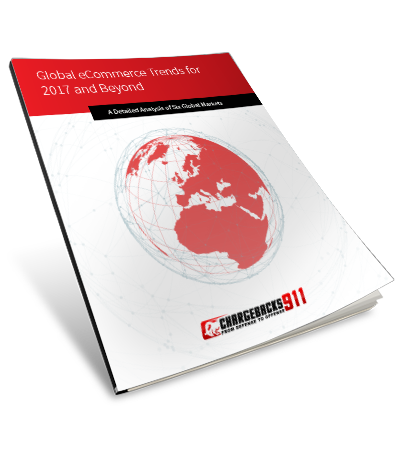How Will Europe's Digital Single Market Impact the U.S.?
Will greater legislative regulations increase eCommerce earning potential or stifle innovation? Can global merchants remain competitive, or will they be forced out to make space for local vendors?
As the rest of the world waits in anticipation for the final stages of Europe’s Digital Single Market to take shape, Chargebacks911® analyzes the likely implications and warns industry members of what’s in store.
Europe’s Digital Single Market
In 2014, the European Commission announced intentions to create a Digital Single Market. The proposal mimics the original intention of the European Union:
- Encourage trade
- Remove barriers
- Encourage free movement of goods and services
European Commission President, Jean-Claude Juncker said,
I want to see every consumer getting the best deals and every business accessing the widest market–wherever they are in Europe.
The Digital Single Market will theoretically turn this vision into a reality. The Commission claims their policies will contribute €415 billion ($446 billion) per year to the European economy and create hundreds of thousands of new jobs.
Leaders hoped the 16-point policy would be achieved by the end of 2016, but the process proved slower than expected. However, Vice-President of the Digital Single Market, Andrus Ansip, is confident that a significant number of member states are supportive of the plan.
How Europe’s Actions Could Impact the U.S. Market
The implications of the Digital Single Market will likely be numerous and far reaching. Members of the global eCommerce community, those outside the EU, could potentially suffer significant consequences from the new policy.
 The EU Becomes a Walled Garden
The EU Becomes a Walled Garden
No other global region has proposed such a unifying legal framework for eCommerce. By creating an all-encompassing structure of regulations for such a large and high-value economy, the European Union would essentially become a walled garden.
Not only will it be challenging for global merchants to enter the region, some might decide that the reward isn’t worth the effort. Consumers’ shopping choices would, once again, be limited, while U.S. merchants are ousted from a very valuable market.
This situation will cause short-term losses for global eCommerce merchants, as well as impact long-term international relations.
Original discussions regarding the Digital Single Market indicated the policy would make the EU an even more attractive market for global merchants. However, it has since been revealed that the original intentions were untrue or have changed. A former French minister said, “We don’t want to be a digital colony of U.S. internet giants.” In all probability, many member states feel the same way, hoping the new policy will effectively handcuff the competitiveness of U.S. merchants.
 New Regulations Don’t Guarantee Adoption
New Regulations Don’t Guarantee Adoption
One objective of these proposed policies is to increase digital adoption among European member states. However, the policy hasn’t accurately identified what’s holding consumers back.
For example, the Digital Single Market intends to increase cyber security and protection for consumers—but consumers haven’t indicated their lack of involvement in the digital community is due to an absence of trust.
In fact, when compared to Americans, Europeans are far more trusting. Nearly 15% of Europeans feel they have complete control of the information they provide online, whereas only 5% of Americans are very confident that personal information is private and secure.
And, evidence has already shown that over-regulating digital security negatively impacts the economy. Researchers from the University of Toronto and MIT examined the European Union’s Privacy and Electronic Communications Directive and the diminished capability to collect personal information to create targeted advertising. The study revealed that the privacy law decreased the effectiveness of advertising by 65% in applicable regions—and could lead to a 0.35% reduction in the EU’s gross domestic product.
Additionally, 71% of Europeans use social media compared to just 65% of Americans. However, the U.S. leads Europe in the majority of eCommerce performance indicators. This shows that digital adoption isn’t necessarily lacking—eCommerce adoption is what’s coming up short.
Applying misguided regulations won’t have the intended effect, but an unintended outcome will be the result: American merchants will be forced to comply with new European security regulations that consumers haven’t requested and will likely view as off-putting.

The Essential Guide to Global eCommerce
Our new whitepaper takes a close look at eCommerce practices around the world. We carefully examined data on markets from Africa to Asia and beyond, all to assemble a thorough, predictive picture of where eCommerce is headed over the next several years.
FREE DOWNLOAD A Level Playing Field Removes Necessary Competition
A Level Playing Field Removes Necessary Competition
In theory, removing barriers to entry introduces greater opportunities for both merchants and consumers. However, a level playing field also removes necessary competition.
Adoption is not driven solely by user demand—it’s also impacted by business supply. Instead of gaining the competitive edge through innovation, merchants burdened by over-regulation will focus more intently on ways to improve the bottom line. The tactics—produce less, increase prices, or reduce quality—will do nothing to increase adoption.
A level playing field diminishes the extreme wealth of talent, innovation, and creativity that currently exists in the EU. As the U.S. Chamber of Commerce pointed out:
European startups like Spotify, Soundcloud, and Skype didn’t grow due to protectionist policies but because they offer real value for consumers with their products and services. Market forces in the fast-moving digital economy have consistently demonstrated that it is quality that trumps all other factors.”
Stifling the creativity of European entrepreneurs will obviously have a significant impact on the rest of the global eCommerce community.
 Uniform Policies Don’t Equate to Uniform Risk
Uniform Policies Don’t Equate to Uniform Risk
While legislative bodies might be able to regulate every action performed by businesses, they won’t be able to normalize the actions of criminals or consumers.
Preventing neither criminal fraud nor friendly fraud is predicated on a unified eCommerce experience. A merchant’s risk exposure is still a unique characteristic. Enticing businesses into new regions under the pretense of uniformity introduces greater threats for the entire global eCommerce environment.
Merchants—whether in the EU or abroad—will still need to carefully consider region-specific threats and create corresponding risk mitigation plans before entering new markets.
Perhaps most distressing though is the realization that blurring the boundaries between the 28 member states forces merchants to either enter risk-zones they have no desire to encounter or forfeit the entire European market. The Digital Single Market will encourage an “all or nothing” philosophy.
 Compliance Might Be Standardized Too
Compliance Might Be Standardized Too
In most regards, eCommerce adoption has been much slower in Europe than it was in the U.S. This has essentially enabled the EU to learn from the mistakes of their North American counterpart.
One of the U.S.’s shortcomings in particular, payments industry standardization and compliance, is an area Europe could potentially recognize as an opportunity for improvement.
The payments industry as a whole lacks consistently applied standards and compliance with those standards. Very little transparency, resulting in an inability to determine which regulations will be adhered to, has helped spur the proliferation of friendly fraud. A truly equitable eCommerce environment can only be achieved with greater compliance.
Digital Single Market policies extend far beyond traditional eCommerce legislation, and there is a chance compliance could one day be addressed on a larger regulatory scale. While this would certainly benefit European issuers, acquirers, and merchants, it would escalate the U.S.’s current challenges. Again, greater regulatory control in the EU will further segregate the continent from the rest of the world.
Recognizing Challenges and Creating a Proactive Response
These expressed implications are just the beginning of what will prove to be a very far and long-reaching legislative venture. It is imperative that U.S. eCommerce merchants and payments industry members recognize the upcoming challenges and create a strategy to proactively address the associated risks.
If you’re concerned about how Europe’s Digital Single Market will impact your business, contact Chargebacks911 today. We’d be happy to help you identify the unique implications for your company and create a risk-free strategy to optimize profitability in a global marketplace.










